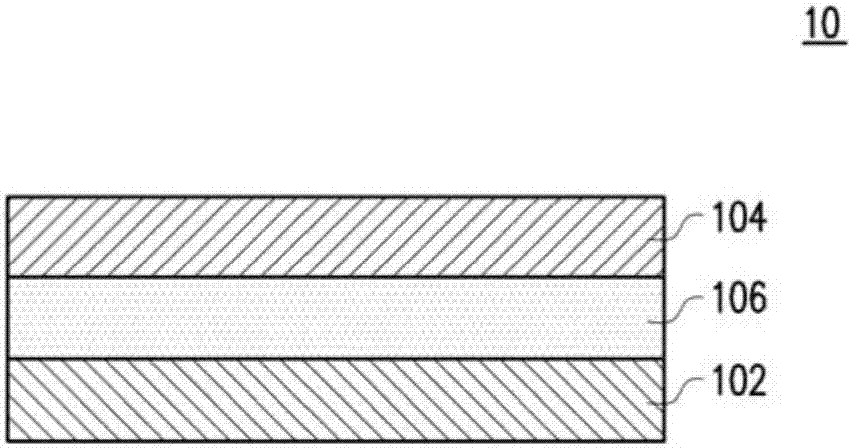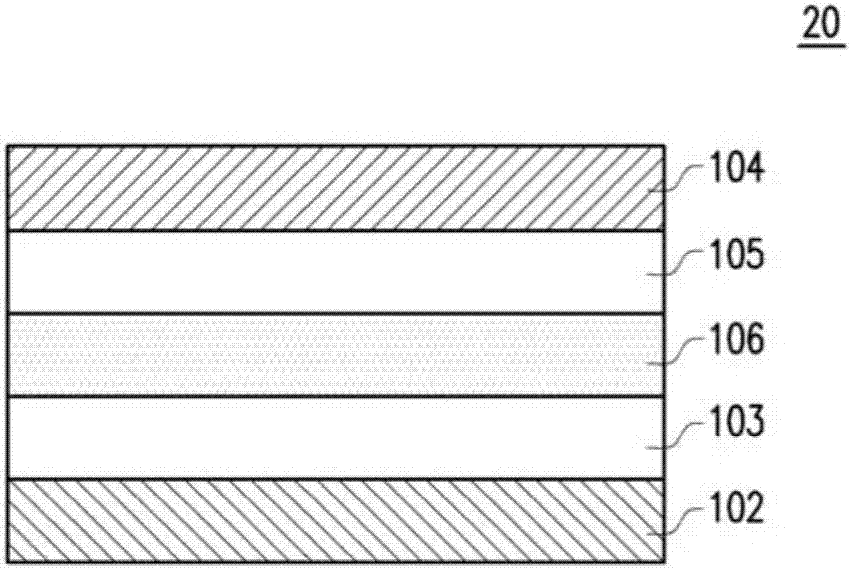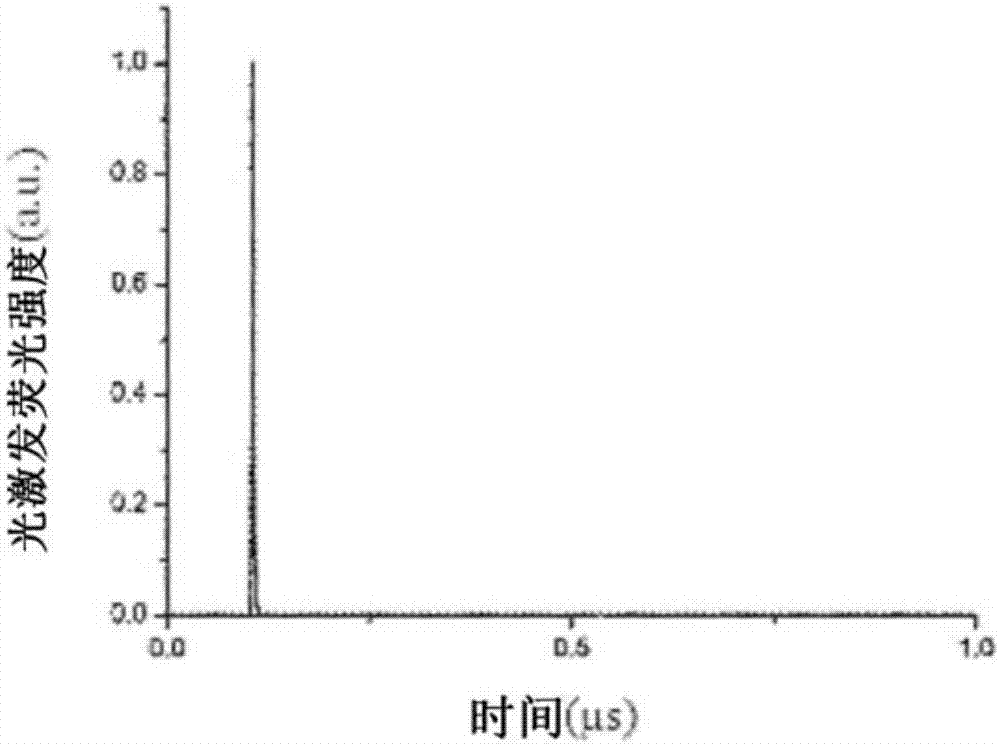Aromatic compound and organic light-emitting diode containing aromatic compound
A technology of aromatic compounds and light-emitting diodes, which is applied in luminescent materials, organic chemistry, chemical instruments and methods, etc., can solve the problems of slow development of luminous efficiency and luminous life of blue luminescent materials, and achieve the improvement of external quantum efficiency and high quantum efficiency. Efficiency, the effect of excellent thermal stability
- Summary
- Abstract
- Description
- Claims
- Application Information
AI Technical Summary
Problems solved by technology
Method used
Image
Examples
Synthetic example 1
[0087] Synthesis Example 1: Synthesis of Intermediate I-1
[0088] [Reaction scheme 1]
[0089]
[0090] 4-(diphenylamino)benzaldehyde (4-(diphenylamino)benzaldehyde) (2.73g, 10.0mmol) and 4-bromobenzyl phosphate diethyl (diethyl(4-bromobenzyl)phosphonate) (3.53g, 11.5mmol) was placed in a double-necked flask, vacuumized and fed with nitrogen, and then 20mL of anhydrous tetrahydrofuran (THF) was added; under ice-cooling, potassium tert-butoxide (t-BuOK) dissolved in THF (30mL) ) (3.36g, 30mmole) was slowly added and mixed, and reacted at 0°C for 15 minutes. The solvent was removed by concentration under reduced pressure, and then purified by column chromatography (n-hexane:dichloromethane=9:1) to obtain a yellow intermediate product I-1 ((E)-4-(4-bromostyryl)- N,N-diphenylaniline) (3.71 g, 87% yield).
[0091] 1 H NMR (400MHz, CDCl3, δ): 7.45 (d, J = 8.4Hz, 2H), 7.36 (d, J = 8.8Hz, 2H), 7.34 (d, J = 8.8Hz, 2H), 7.28-7.24 ( m, 4H), 7.11(d, J=7.6Hz, 4H), 7.05-7.01(m, 5H)...
Synthetic example 2
[0094] Synthesis example 2: the synthesis of intermediate product 1-2
[0095] [Reaction scheme 2]
[0096]
[0097] 4-(bis(4-fluorophenyl)amine)benzaldehyde (4-(bis(4-fluorophenyl)amino)benzaldehyde) (4.64g, 15mmol) and 4-bromobenzyl phosphate diethyl (diethyl(4 -bromobenzyl)phosphonate) (5.07g, 16.5mmol) was placed in a two-necked flask, vacuumized and nitrogen was introduced, and 20mL of anhydrous tetrahydrofuran (THF) was added; Potassium tert-butoxide (t-BuOK) (5.0 g, 45 mmol) was slowly added and mixed, and reacted at 0° C. for 15 minutes. The solvent was removed by concentration under reduced pressure, and then purified by column chromatography (n-hexane:dichloromethane=9:1) to obtain a yellow intermediate product I-2 ((E)-4-(4-bromostyryl)- N,N-bis(4-fluorophenyl)aniline) (6.17 g, 89% yield).
[0098] 1 H NMR (400MHz, CDCl 3 ,δ):7.44(d,J=8.4Hz,2H),7.33(d,J=8.8Hz,2H),7.32(d,J=8.8Hz,2H),7.06-6.92(m,11H),6.88 (d,J=16Hz,1H).
[0099] 13 C NMR (100MHz, CDCl 3 ,δ...
Synthetic example 3
[0101] Synthesis example 3: the synthesis of intermediate product 1-3
[0102] [Reaction scheme 3]
[0103]
[0104] 4-(1-naphthalenyl(phenyl)amine)carbaldehyde (4-(naphthalen-1-yl(phenyl)amino)benzaldehyde) (2.87g, 8.9mmol l) and 4-bromobenzyl diethyl phosphate (diethyl(4-bromobenzyl)phosphonate)(3.0g, 9.76mmol) was placed in a two-necked flask, vacuumized and fed with nitrogen, and then 20mL of anhydrous tetrahydrofuran (THF) was added; Potassium tert-butoxide (t-BuOK) (2.24 g, 20 mmol) in THF (30 mL) was slowly added and mixed, and reacted at 0° C. for 15 minutes. The solvent was removed by concentration under reduced pressure, and then purified by column chromatography (n-hexane:dichloromethane=9:1) to obtain a yellow intermediate product I-3 ((E)-N-(4-(4- bromostyryl)phenyl)-N-phenylnaphthalen-1-amine) (2.67 g, 63% yield).
[0105] 1 H NMR (400MHz, CDCl 3 ,δ):7.91-7.86(m,2H),7.77(d,J=8.0Hz,1H),7.48-7.29(m,10H),7.22-6.94(m,8H),6.85(d,J=16Hz ,1H).
[0106] 13 C N...
PUM
| Property | Measurement | Unit |
|---|---|---|
| thermal decomposition temperature | aaaaa | aaaaa |
Abstract
Description
Claims
Application Information
 Login to View More
Login to View More - R&D
- Intellectual Property
- Life Sciences
- Materials
- Tech Scout
- Unparalleled Data Quality
- Higher Quality Content
- 60% Fewer Hallucinations
Browse by: Latest US Patents, China's latest patents, Technical Efficacy Thesaurus, Application Domain, Technology Topic, Popular Technical Reports.
© 2025 PatSnap. All rights reserved.Legal|Privacy policy|Modern Slavery Act Transparency Statement|Sitemap|About US| Contact US: help@patsnap.com



